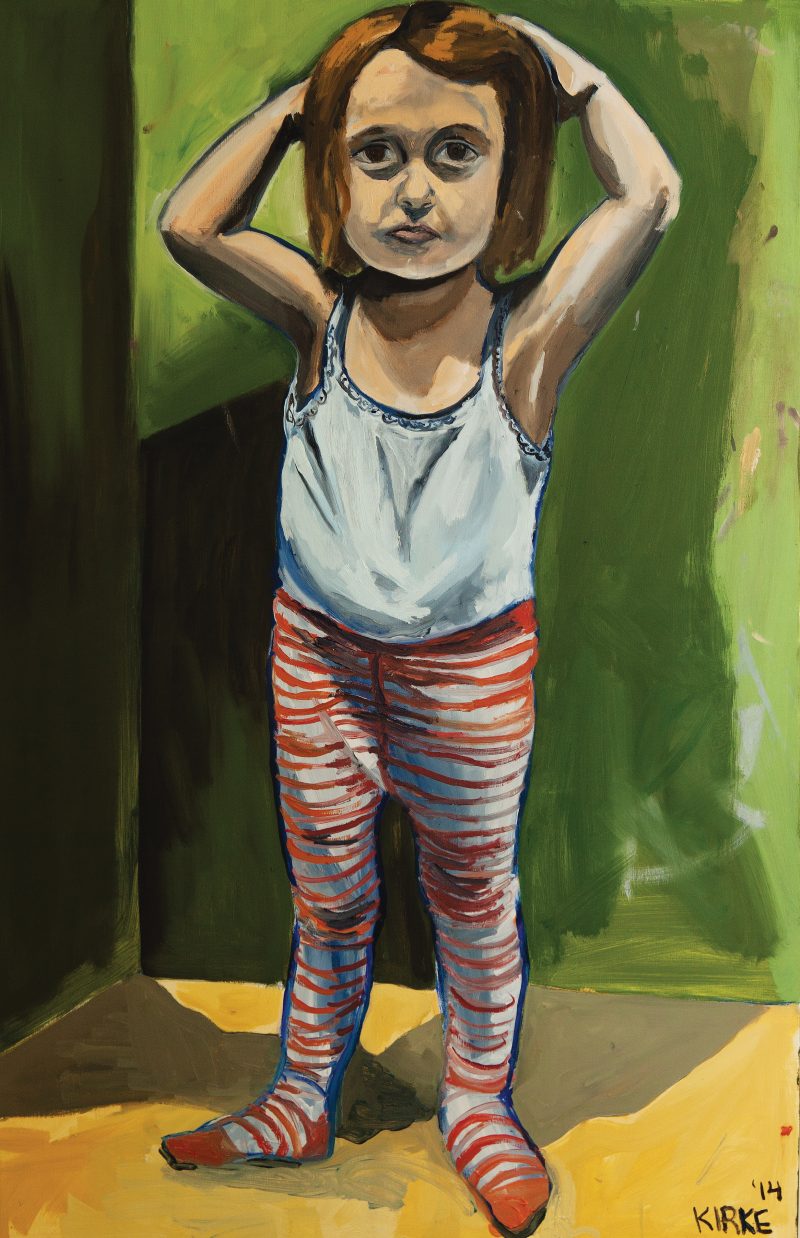Jemima Kirke is a painter and an actress, known for her role of Jessa on the HBO show Girls. She attended Rhode Island School of Design, where she made small, abstract works on paper that carry an influence of German expressionism. Later, she made an acute turn toward a more traditional form of portraiture painting, using easels and live models, mostly friends and family, some of whom are nude. Her images are often charged with uncertain psychological tensions, and are constructed from deep, earthy hues and strong, oily brushstrokes.
I met Kirke at her Brooklyn studio, a converted apartment on the ground floor of her home in Carroll Gardens. In the space she’s built a wooden dais for her models and hung some old photographs on the walls. As we talked about her work, we browsed her collection of art monographs (Joseph Beuys, Elizabeth Neel), and opened some of her mail, which included an ebay-ordered poster for the 1981 German film Christiane F., and some snack bags for her daughter’s lunch.
—Ross Simonini
Rafaella
THE BELIEVER: What’s the name of this one?
JEMIMA KIRKE: It’s probably going to be my daughter’s name, Rafaella.
BLVR: Do you usually name portraits after people?
JK: Yeah, naming is hard. Since it’s my first painting of her I don’t want to name it anything different.
BLVR: You just finished it this morning, right?
JK: Yeah.
BLVR: How did you start it?
JK: I had her stand up on this stage. I built it so the model would be at eye level with me—so I wouldn’t be looking down, which I’ve done, but I just wanted to try it. So I had her stand there and she painted. She has her own little easel and I brought her colors in and let her paint. And every now and then I would have her stand and face me just so I could get her features and the shape of her body. But I knew she wouldn’t sit still, so it had to be more about getting down her presence.
BLVR: Would you say it was done quickly?
JK: Yeah, pretty quickly. I probably worked on it for fifteen hours.
BLVR: How many of those hours would you say she was actually standing in front of you?
JK: Two. I’m really fast. I probably got the whole thing, without the colors or the buildup. I got the position the whole time she was there. When I paint an adult I try to have them come in every time I work on it, but not this time.
BLVR: And then, when she...
You have reached your article limit
Sign up for a digital subscription and continue reading all new issues, plus our entire archives, for just $1.50/month.
Already a subscriber? Sign in





